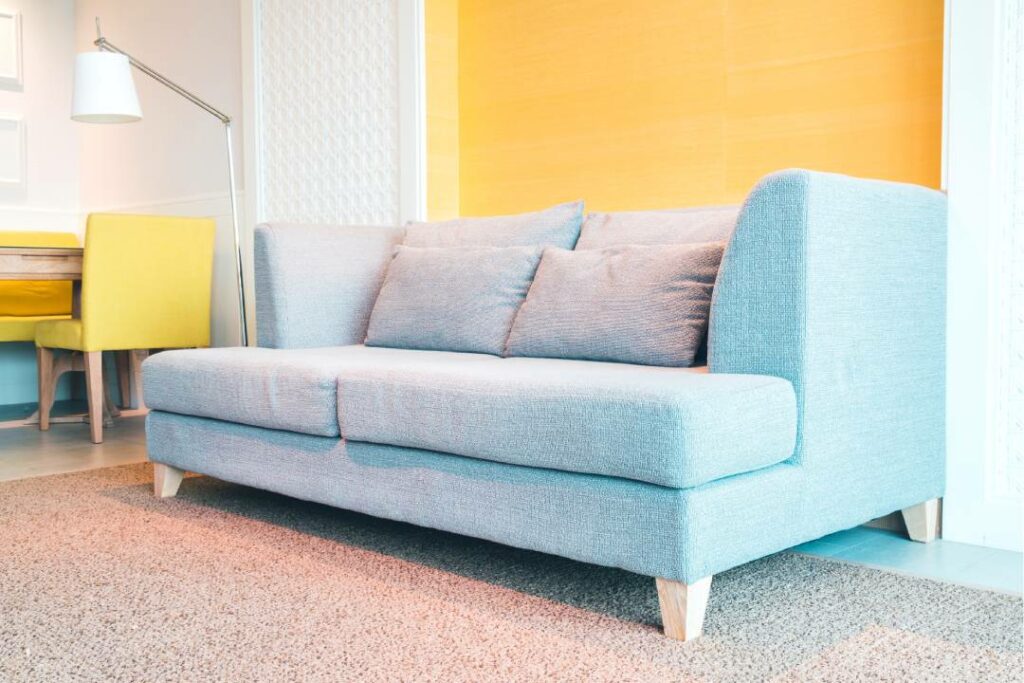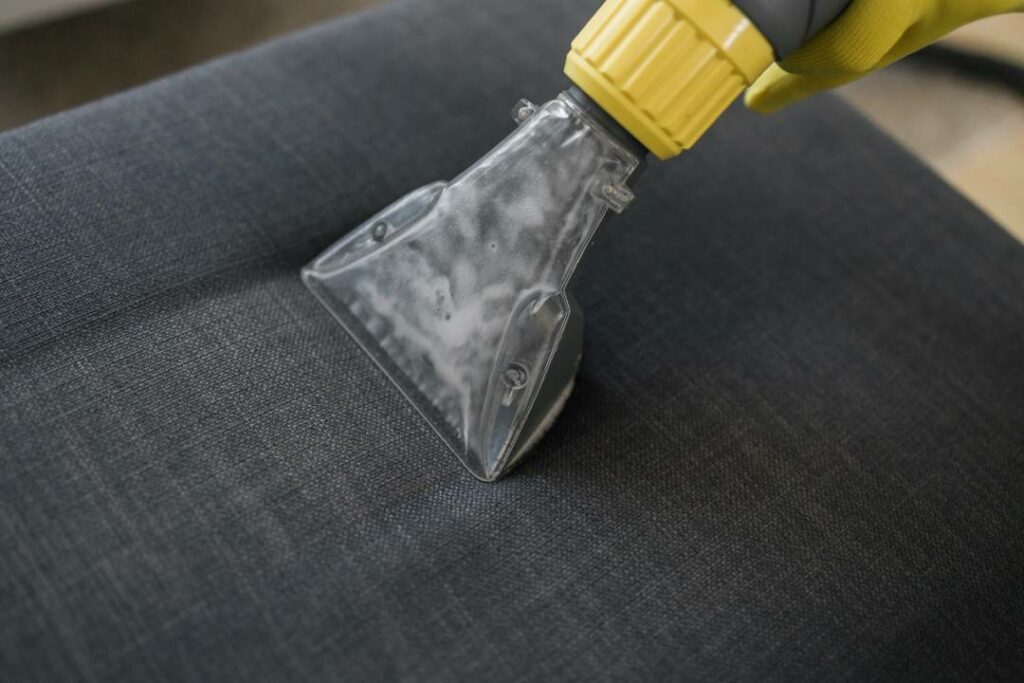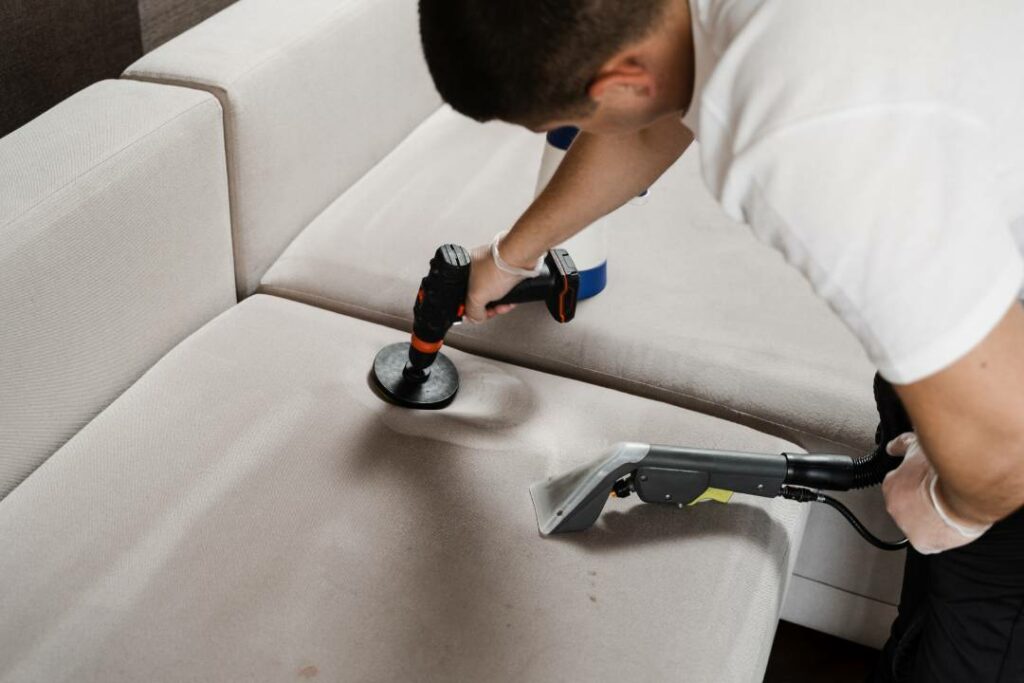Maintaining clean fabric on your upholstery is not just a matter of aesthetics; it’s a crucial aspect of home care that impacts everything from comfort to the longevity of your furniture.
At Kintex, we understand the importance of clean fabric and upholstery, and we’re here to guide you through the best practices to keep your furnishings looking and feeling their best.
Why is Having Clean Fabric for Upholstery Important?

1. Health & Hygiene
First and foremost, clean fabric is crucial for maintaining a healthy indoor environment.
This is because fabrics can easily become a breeding ground for allergens, dust mites, and microbes, leading to potential health risks like allergies and respiratory issues.
2. Prolonged Lifespan
Additionally, dirt, stains, and everyday debris can be more than just unsightly; they can cause your upholstery to wear down prematurely.
By keeping these harmful elements at bay through regular cleaning, you ensure that your furniture remains both functional and beautiful for a much longer time.
3. Appearance & Aesthetics
There’s no denying the impact of clean fabric on the aesthetics of your space.
Stains and soiling not only detract from the beauty of your furniture but can also cause permanent discolouration if neglected.
On the other hand, clean fabric contributes to a more inviting and visually appealing environment.
4. Comfort & Enjoyment
Lastly, the comfort provided by clean, soft upholstery cannot be overstated.
Clean fabric feels softer, smells fresher, and invites relaxation and enjoyment.
It allows you to fully relax on your furniture without the worry of encountering unpleasant textures or the potential health risks posed by allergens and dirt.
Read More: Why is Fabric Colour Important in Interior Space Design
Get Clean Fabric: How to Clean Your Upholstery

Here’s a simple guide on how you can effectively clean your fabric and maintain the appearance of your furniture:
1. Read Care Labels
Always start with the care labels on your upholstery. They provide crucial information about the fabric type and the cleaning methods that are safe to use.
As a result, following these instructions will help you avoid any accidental damage to your furniture.
2. Vacuum
Begin the cleaning process by vacuuming your upholstery. This removes the surface layer of dirt, dust, and debris.
You can also utilise a soft brush attachment or a specialised upholstery brush to ensure you don’t scratch or damage the fabric.
3. Spot Test
Before using any cleaning solution, it’s essential to do a spot test on a hidden area of the upholstery.
Doing so ensures that the cleaner won’t cause any unwanted discolouration or damage.
4. Choose the Right Cleaning Solution
Next, select an appropriate cleaning solution depending on the type of fabric and the nature of the stains or dirt.
You can opt for commercial upholstery cleaners or create a mild solution at home with detergent and water.
5. Pre-Treat Stains
If there are specific stains on your upholstery, address these first by pre-treating them with your chosen cleaning solution.
Remember to blot gently and avoid rubbing, as it can spread the stain further.
6. Clean the Upholstery
Apply the cleaning solution using a clean, damp cloth or a soft brush, covering the entire piece.
Work in sections, moving from top to bottom, and take care not to over-wet the fabric.
7. Gently Agitate
For tougher stains or dirt, you may need to gently agitate the fabric with a soft brush or microfibre cloth.
This helps the cleaning solution penetrate the fibres and loosen the dirt.
8. Blot, Don’t Rub
Once you’ve applied the cleaning solution, blot the fabric with a dry cloth or paper towel.
Avoid rubbing it, as this can damage the fabric fibres or cause the stain to spread.
9. Rinse & Repeat
If the cleaning solution needs to be rinsed out, use a clean cloth to wipe away any residue. Ensure all soap is removed to avoid buildup.
10. Dry Properly
Let the upholstery air dry completely. To speed up the process, you can open windows or use fans, but avoid direct heat sources, like hairdryers, which can harm the fabric.
11. Brush & Restore
Finally, once the upholstery is fully dry, use a soft brush or your hands to fluff the fabric.
This restores the texture and ensures the upholstery doesn’t become stiff from the cleaning process.
Read More: Upholstery in Interior Design: Elevating Spaces & More
From Durability to Design: Explore Kintex’s Upholstery Fabrics
For individuals in search of high-quality upholstery fabric, Kintex is your go-to supplier in Malaysia.
Our extensive upholstery fabric collection is designed to meet diverse needs and preferences, ensuring durability, style, and ease of care.
Explore our range today and transform your space with the beauty of well-maintained upholstery!







